- Description
- Reviews (0)
Description
Kuhli Loach
The Kuhli loach (Pangio kuhlii) is a popular freshwater aquarium fish species appreciated for its small size, unique eel-like body shape, and active cleaning bottom-dwelling behaviors.
The ideal aquarium setup for Kuhli loaches requires sandy substrate, hiding places, subdued lighting, and good water quality.
By providing an appropriate habitat, water conditions, diet, and social needs, Kuhli loaches can thrive for many years in the home aquarium. The following article will outline their care requirements in further detail.
Quick Notes about Pangio Kuhlii
| Name | Kuhli loach |
| Other Names | The true Kuhli loach, Eel loach, Coolie Loach, Noodle fish, Leopard Eel, and Prickly Eye |
| Scientific Name | Pangio kuhlii (Acanthophthalmus kuhlii) |
| Water type | Freshwater |
| Tank size (minimum) | 10 gallons (~60 liters) |
| Keeping | Easy |
| Breeding | Difficult |
| Size | up to 4 inches (10 cm) |
| Optimal Temperature | 72 – 79°F (22 – 26°C) |
| Optimal PH | 5.5 – 7.5 |
| Optimal GH | 1 – 10 |
| Dwellers | bottom to mid-dwelling |
| Nitrate | Less than 60 |
| Diet | Omnivore |
| Temperament | Peaceful |
| Life span | up to 10 years |
| Color Form | Light pinkish to yellow with brownish-black bands |
Taxonomy of Pangio Kuhlii
The species was first described in 1846 by French zoologist Achille Valenciennes (1794 – 1865), who named it Cobitis kuhlii.
In 1859, the species was moved to the genus Acanthophthalmus by American ichthyologist and taxonomist Theodore Gill (1837 – 1914). At the time, the genus Acanthophthalmus was used for loaches with small dorsal and caudal fins located mid-body. Thus, it was moved to another genus based on its fin positioning.
In 1981, the genus Pangio was described for loaches with similar characteristics. As a result, the kuhli loach was moved back and is now properly known as Pangio kuhlii.
Etymology of Pangio Kuhlii
The genus name “Pangio” is derived from the Greek word “Pangios”, meaning “All, entire, whole”, referring to the complete lateral line running the full length of the body.
The species name “Kuhlii” was named in honor of German naturalist Heinrich Kuhl (1797 – 1821) who collected natural history specimens in Indonesia and the Netherlands East Indies.
Note: its previous genus “Acanthophthalmus” is derived from two Greek words “Akantha” meaning “Spine or thorn”, and “Ophthalmos” meaning “Eye”. It refers to the serrated ridge over the eye in this genus.
Distribution of Pangio Kuhlii
 This species is native to freshwater habitats in Southeast Asia. Its natural range includes the islands of Sumatra, Borneo, Peninsular Malaysia, and Java in Indonesia.
This species is native to freshwater habitats in Southeast Asia. Its natural range includes the islands of Sumatra, Borneo, Peninsular Malaysia, and Java in Indonesia.
Nowadays, Pangio kuhlii has been introduced beyond its native range through the aquarium trade. There are reports of established introduced populations in Thailand, Singapore, China, Japan, and other countries.
Habitat of Pangio Kuhlii
Pangio Kuhlii usually inhabits slow-moving rivers, streams, peat swamps, and reservoirs behind dams with sandy or gravelly substrates.
These fish prefer shallow areas or other quiet habitats where they can hide in leaf litter and dense aquatic vegetation.
Description of Pangio Kuhlii
 Kuhli loaches are a relatively small fish species. In aquariums, the average size of adult fish is about 3 – 4 inches (7 – 10 cm) in total length.
Kuhli loaches are a relatively small fish species. In aquariums, the average size of adult fish is about 3 – 4 inches (7 – 10 cm) in total length.
Distinguishing characteristics of Kuhli loaches:
- Body shape. It has slim, elongated, narrow bodies, 5-10 times longer than wide.
- There are 4 pairs of barbels around the mouth. The maxillary barbel does not reach the corner of the mouth. The median lobe of the lower lip is not produced into a barbell. Each barbel measuring 1/8 to 1/5 of an inch (3 – 5 mm) long.
- Vertebrae. It has 47-51 total vertebrae (the backbone or spinal column).
- Fins. Very small dorsal and caudal fins located mid-body, pectoral fins low on sides. The tail is rounded and slightly forked.
- Eys. Their eyes are covered by transparent skin. There is a split, pointed spine located below each eye of the fish.
- Color. The body is brownish-black in background color with irregular 6-10 vertical darker bands finishing out with another black band through the tail. Spaces between bands are usually light pinkish to yellow.
Interestingly, loaches breathe not only through their gills but also have intestinal breathing. In addition, oxygen is absorbed through the skin itself, as in other fish that breathe through their skin and intestines.
Difference between Pangio Kuhlii, Pangio Myersi, and Pangio Cuneovirgata
This fish species is often confused not only by aquarists but even by professional researchers. For example, in one of the studies, researchers expressed frustration that in some previous works, P. kuhlii is a mixture of three species (Pangio cuneovirgata, Pangio myersi, and Pangio kuhlii)
Here are some key differences between the three loach species:
| Pangio kuhlii | Pangio myersi | |
| Bars | 6-10 | 8-11 |
| Colour pattern | irregular, wider on the back, narrowing towards the bottom | broad, quadrangular, and very regular black bars |
| Body | slimmer | thicker |
Lifespan of Pangio Kuhlii
These fish typically live around 6-8 years.
However, with proper care and optimal water conditions, they can sometimes live up to 10 years or even longer!
It is absolutely important to provide them with a suitable environment, a balanced diet, and regular maintenance to ensure their well-being and longevity.
Typical Behavior of Pangio Kuhlii
Temper:
Kuhli loaches are known to be peaceful fish. They have a calm temperament and are not known to be aggressive or prone to nipping at other fish.
| Nonetheless, I have heard of several cases where Kuhli loaches have nibbled on the fins of Bettas. As for other fish, such behavior has never been observed.
It is difficult to say what may have caused this strange behavior. It could be their personalities and even the conditions in which they are kept (it’s possible that the fish were stressed). |
Sociality:
Even though Pangio kuhlii is not a schooling fish, they are still very social animals. They enjoy chasing each other and resting on plant leaves.
The practice of keeping these fish has shown that they will become stressed and inactive if not provided with sufficient numbers and habitat complexity.
The absolute minimum recommended number for keeping these fish is 3-4 individuals. Ideally, it will be better to keep them in groups of 6 or more.
Activity:
Pangio kuhlii is a nocturnal fish that is more active in the evening and at night. During the day, these fish are very calm and not active.
Even more, they tend to hide at the bottom of the tank sitting close to each other. This is probably the main complaint about this species – hobbyists say that they rarely (if at all!) see their pets.
| They become more outgoing during the day when they are kept in large quantities, in aquariums with plenty of hiding places, without larger fish, and with subdued lighting.
Thus, the more secure they are, the less they hide. Also, Kuhli loaches may appear as sluggish sausages, but that is a very deceptive impression. They can move lightning-fast. Therefore, if you put them in a densely planted aquarium, it will be almost impossible to catch them there with a net. So, keep that in mind. |
Kuhli loaches enjoy exploring their environment and are particularly fond of areas with dense vegetation or places to hide. They will try to get into any cracks and crevices in your tank that are inaccessible to other aquatic animals.
They also love to burrow in sand and silt and may even stay underground for a few days.
They are good jumpers. So, you need to cover the tank or lower the water level by at least a few inches.
Interesting fact: It has been observed that Kuhli loaches are very sensitive to changes in atmospheric pressure and become significantly more active before rainfall.
Placement in Tank:
Kuhli loaches are bottom dwellers.
Features:
- Social: Yes
- Activity: Low
- Placement: Bottom dwellers
- Peaceful: Yes
- Nippers: No
- Jumpers: Yes
Feeding Pangio Kuhlii
 Kuhli loaches are opportunistic feeders and will readily accept most foods given to aquarium fishes.
Kuhli loaches are opportunistic feeders and will readily accept most foods given to aquarium fishes.
In an aquarium, they will usually accept food of all kinds (live, dry, freeze-dried, and even blanched vegetables) as long as it is adapted to their mouth size. A varied and balanced diet is always recommended.
Some live food options include:
- brine shrimp (artemia salina),
- daphnia,
- bloodworms,
- tubifex worms,
- blackworms,
- grindal worms,
- cyclops, etc
Although Kuhli loaches are absolutely not picky eaters, they do love to eat worms! They also accept frozen and any commercial food (sinking pellets, flakes, etc.) as well.
For the best growth, feeds should contain protein at a level of about 80% of the diet and 20% (vegetables, spirulina, etc.).
Kuhli loaches and planariaSome aquarists buy these fish to control planaria. While they can indeed consume planaria, they will not actively hunt them down. |
Feeding Tip:
Since Kuhli loaches are nocturnal animals, an ideal approach would be to feed them at least in the late evening.
Features:
- Diet Type: Omnivore
- Food Preference: Meat
- Feeding Frequency: Daily
Are Pangio Kuhlii Plants Safe?
Yes, Kuhli loaches are completely plant-safe. They will not eat any healthy plants in the tank. This species does not eat living plant material.
Keeping and Caring for Pangio Kuhlii
To keep Kuhli loaches healthy and happy, we need to understand their requirements and mimic their natural habitat. Stress will significantly reduce their lifespan.
Although Kuhli loaches are pretty hardy fish and can be easily recommended even for beginners – refrain from introducing them as the first occupants during or immediately after completing the aquarium cycling process. Wait for at least a couple of weeks until the balance is completely established.
However, once they get accustomed and acclimated to new environments they will be one of the easiest fish to keep.
Tank size:
Although some aquarium enthusiasts keep a small group of these fish (3-4 individuals) in 10-gallon (40 liters) tanks, in my opinion, the minimum size for them should be at least 15 gallons (60 liters) for a group of 6-8.
Kuhli loaches should not be kept in small tanks due to their size and behavior. Additionally, they need horizontal swimming space more than depth.
Important: Kuhli loaches are jumpers! In addition, they can squeeze between the glass and the lid. So, it is imperative to take measures: use a tight-fitting lid, lower the water level, use floating plants, etc.
Related article:
Water parameters:
Temperature: This species needs water temperatures ranging between 72 to 79°F (22°C to 26°C). They tolerate cooler temperatures in winter if acclimated slowly.
pH: The ideal pH range is between 5.5 – 7.5. Although Kuhli loaches prefer acidic water, they can also adapt to slightly alkaline water.
Hardness: The tank should preferably have soft to medium water hardness. However, anything in the 1 – 10 GH range is acceptable. They do not like hard water.
Lighting:
Subdued lighting will be the best choice for the Kuhli loaches.
However, if you decide to keep these fish in planted tanks, lighting should be adapted to the needs of plants.
Related articles:
Water flow:
In the natural environment, they are found in slow-moving waters. Therefore, still or very slow water currents are recommended for tanks housing this species
Filtration:
As long as you have got the filter that works great with the size of the tank you have got you will be fine.
| Important: You will not have to cover the filter intake with a sponge to prevent Kuhli loaches from getting in the filter! They will try to get into any gap they can. |
Substrate:
Their natural environment is composed of smaller gravel and fine sand (at least 2-3 inches or 5 – 7 cm deep) where they can dig holes and burrow.
Avoid coarse gravel. Its sharp edges can injure/scratch the body of the fish as they swim in the lower regions of the tank.
Decorations:
 Make sure that your Kuhli loaches have lots of hiding places. They are very skittish.
Make sure that your Kuhli loaches have lots of hiding places. They are very skittish.
Decorations provide hiding places (shelter and protection) and minimize their stress.
These fish will appreciate all types of rocks, sandstones, driftwood, PVC pipes, clay caves, bamboo caves, slate shelves, floating plants, fake plants, leaves, and other decorations to enrich the environment in your tank.
Related article:
Care tips:
- Treatment. Kuhli loaches do not tolerate medicine really well. So, if you need to treat your fish in the tank, you need to start from the ½ of the dozes.
- Cleaning. Be careful during vac cleaning. They can hide in the substrate.
- Plants. If you need to remove plants, it is also worth inspecting the roots. They can hide there as well.
Proper setup focused on sandy substrate, hiding spots, and good water quality will allow Kuhli loaches to exhibit their natural behaviors in the aquarium.
Breeding Pangio Kuhlii
In captivity, it is extremely difficult to breed them since they have particular needs in terms of water quality, temperature, and breeding conditions.
As a result, professional fish breeders use hormonal injections for that.
Maturity:
Kuhli loaches usually reach sexual maturity at the age of 1 – 1.5 years old when they are about 3 inches (7 cm) in length.
Sexing:
Although males and females look very similar, some physical differences between them may help you determine their sex:
- Size. Males are generally thinner and have a smaller body size compared to females. Females have a rounder and fuller belly, indicating the presence of eggs (greenish ovary visible through body wall). A female full of eggs is nearly twice as thick as a male.
- Color. Males exhibit a more intense coloration in certain areas, particularly on their ventral side.
- Fins. Males have a slightly more pointed or elongated anal fin compared to females. In males, the first ray of the pectoral fin is thicker.It is important to note that these differences can be quite subtle, and they may be challenging to notice.
Mating and Fertilization:
 In the dim early light, pairs begin to swim up and down together. Eventually, they intertwine around each other and splash along the surface of the tank.
In the dim early light, pairs begin to swim up and down together. Eventually, they intertwine around each other and splash along the surface of the tank.
Fertilization is external. Females release bright green eggs that are fertilized by the male while they are moving along the surface.
The eggs will float for a bit, then slowly sink.
Eggs:
The eggs are adhesive. In nature, they often attach to the leaves and roots of plants. Unfortunately, eggs that reach the bottom will be eaten by the adults.
These fish are prolific breeders. Each female can carry from 500 to 1000 eggs.
Incubation:
Depending on the temperature, the eggs will usually hatch after 24 – 36 hours.
Fry:
Fry consumes the yolk on the first day and requires a constant supply of live food (such as microworms, vinegar eels, rotifers, etc.).
They grow pretty fast and after 7-10 days, we can eat newly hatched brine shrimp, daphnia, or frozen cyclops).
- At the age of about 2 weeks, they start developing pigmented spots.
- At 1 month old, they grow up to 0.6 – 0.8 inches (1.5-2 cm).
Hormonal stimulation for spawning:
Hormonal stimulation for spawning Pangio kuhlii is often done by injecting chorionic gonadotropin (50-100 units per fish).
- take a 1 ml ampoule of 0.9% sodium chloride solution,
- use an insulin syringe to draw the contents of the ampoule,
- inject the contents into the vial with the gonadotropin through the stopper,
- remove the syringe, but leave the needle in the stopper,
- shake the vial until the solution is completely dissolved.
- insert the syringe into the needle and draw 0.5 units of the solution.
- the injection should be done into the midline of the fish’s body, into the dorsal muscle.
- after the injection, the injection site should be massaged for a few seconds and then the fish should be released into the spawning tank.
Note: The injections must be done carefully, as the fish may start to wriggle when the needle is inserted, and it is important to hold the fish in a way that minimizes any excessive movement.
After the injection, the fish may remain almost immobile for 5-6 hours, occasionally making a few movements around the aquarium. This is a normal reaction.
After that the males begin swimming frantically throughout the tank. They pick up the females from the tank’s bottom and carry them to the surface during this vigorous swimming, where spawning takes place while they circle below the water’s surface.
Spawning tank requirements:
- 2 females per 1 male.
- pH 6.0 – 6.8
- temperature from 79 to 82°F (26°C to 28°C).
- low water level about 8 – 10 inches (20 – 25 cm).
- dim lighting.
- a protective net is placed on the bottom of the spawning tank.
- no substrate.
Natural stimulationOn the internet, another interesting method was mentioned regarding the natural stimulation of Pangio kuhlii.
Using this method, the aquarist claimed to be able to breed them multiple times in a row. |
Pangio Kuhlii and Suitable Tankmates
Kuhli loach is a peaceful and sociable fish that can cohabit with a variety of other fish species in tanks that have relatively similar water parameter requirements.
Source: Click here
Only logged in customers who have purchased this product may leave a review.

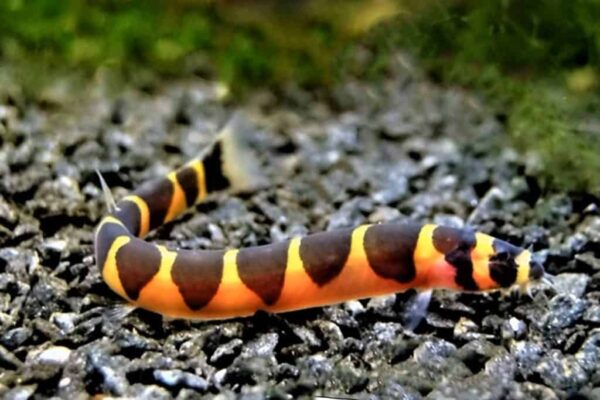
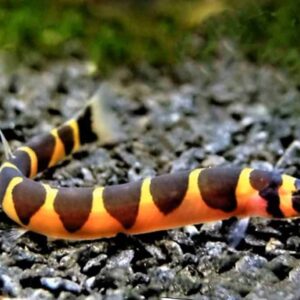
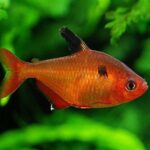
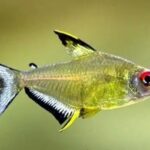

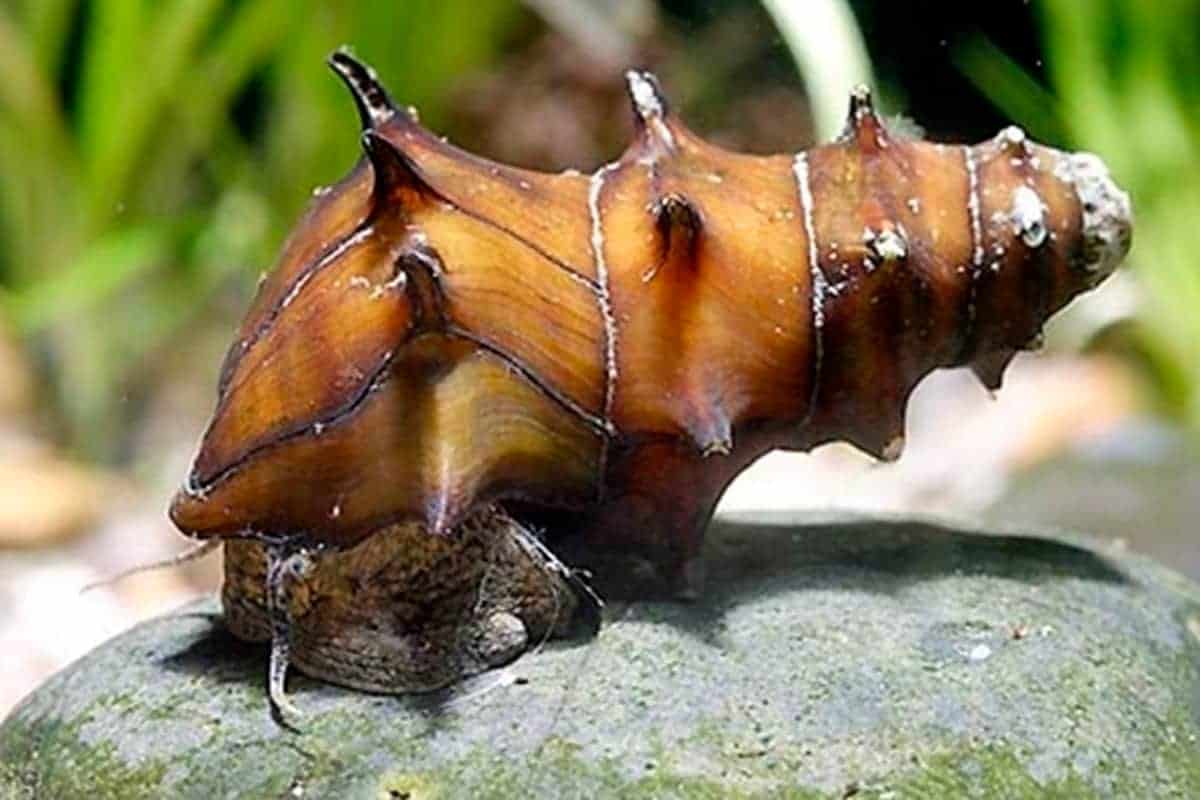
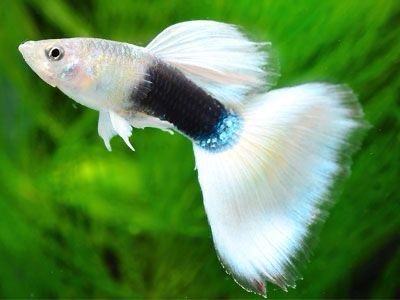
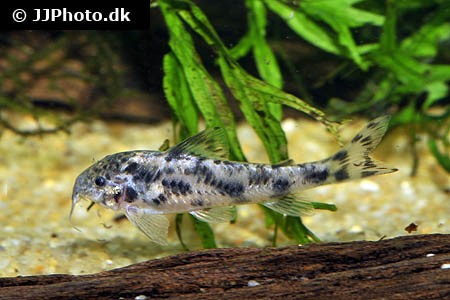
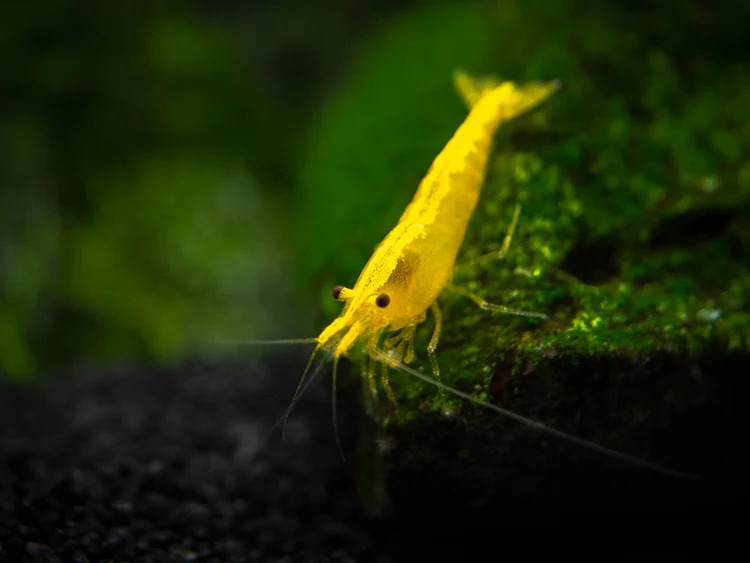
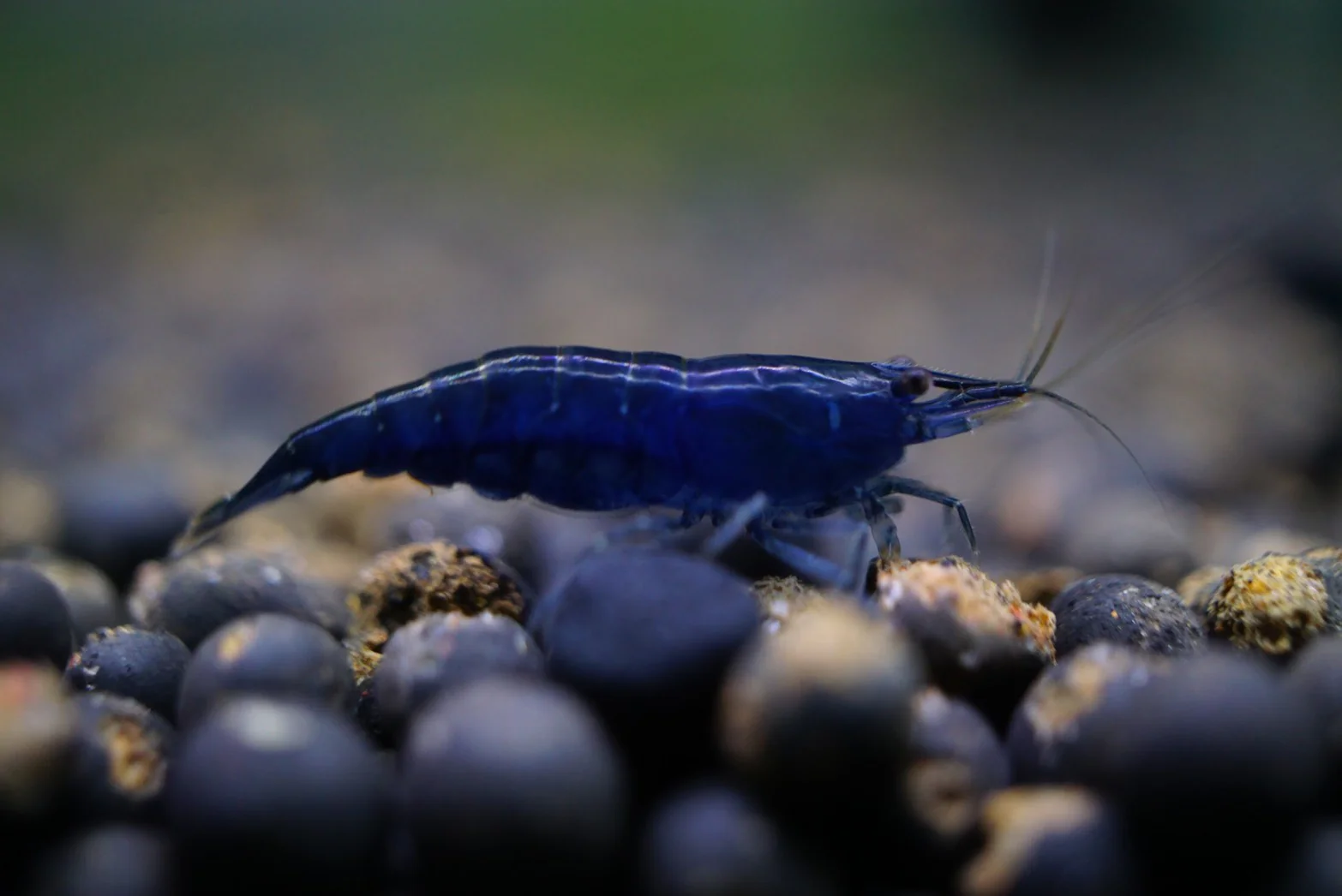
Reviews
There are no reviews yet.